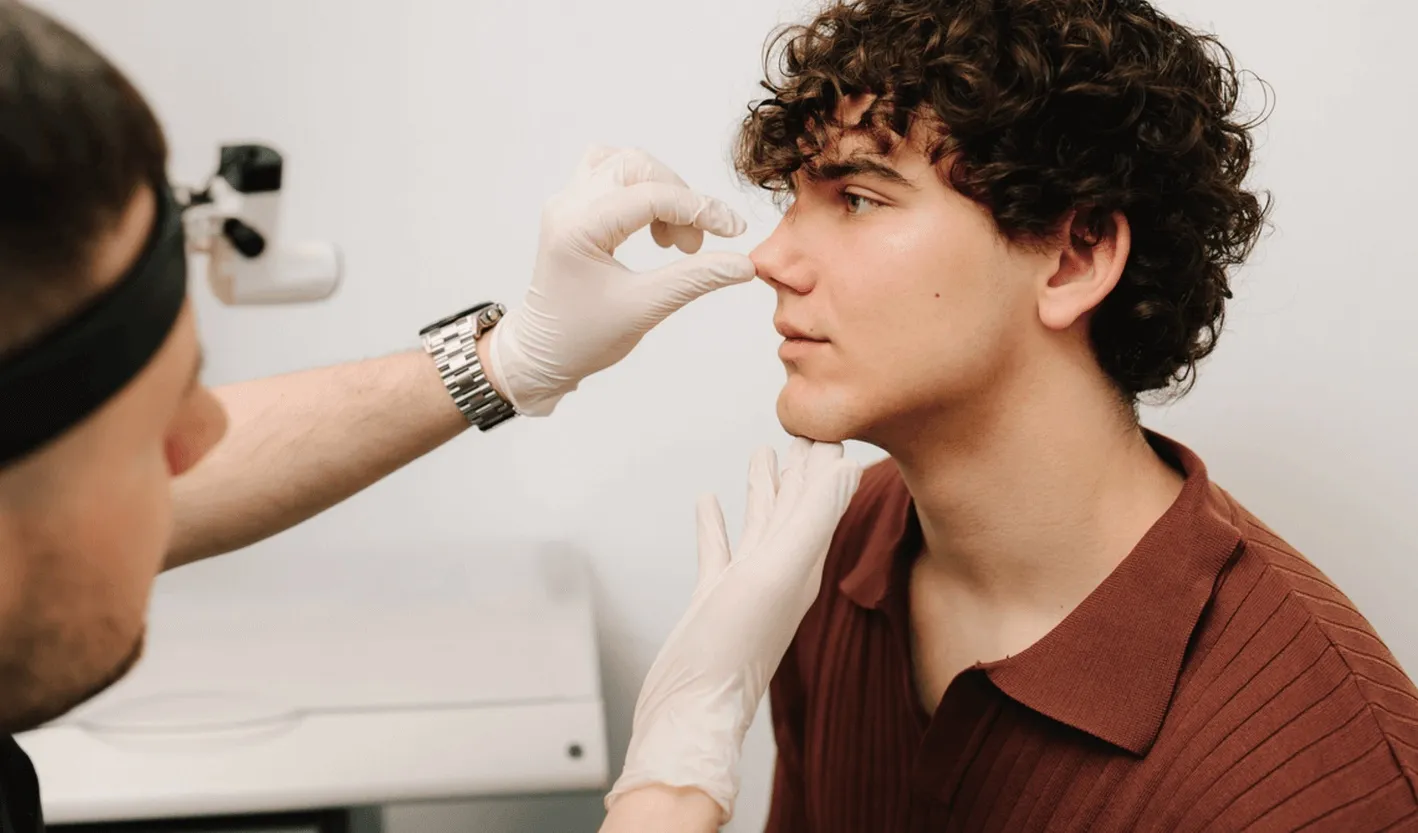If one side of your nose always feels blocked, even when you're not sick, the problem might run deeper than allergies. A deviated septum occurs when the thin wall of bone and cartilage between your nostrils is off-center, making it harder to breathe through your nose.
This common condition can lead to ongoing nasal congestion, frequent sinus infections, snoring, and even sleep troubles, and it’s more common than you might think. Around 80% of people have some degree of septal deviation, though not all these cases cause symptoms. For those who do struggle with daily discomfort, septoplasty is a safe, proven surgical option that reshapes the septum to restore normal airflow and improve quality of life.
Read on to see if septoplasty is right for you, what to expect during and after surgery, and where to find the best septoplasty surgeon in Los Angeles.
What Causes a Deviated Septum?
A deviated septum can either be something you’re born with or something that develops after an injury. In many cases, the septum, the wall that separates your two nostrils, is slightly off-center from birth. For others, it becomes crooked over time due to a broken nose or even a small hit to the face during sports or a fall. These minor injuries might not seem like a big deal at the time, but they can cause the septum to shift and lead to problems later on.
As we age, natural changes in the shape of our face can make a deviated septum worse, especially if it was already a little off to begin with. If you often have one side of your nose that feels stuffy, trouble breathing through your nose, or you keep getting sinus infections, it might be a sign that your septum isn’t in the right position.
When Is Surgery Necessary for a Deviated Septum?
Septoplasty is usually recommended when a deviated septum starts to seriously affect your breathing or sleep, and other treatments just aren’t cutting it:
- If you've tried nasal sprays or decongestants but still struggle to breathe clearly through your nose, especially on one side, it may be time to consider surgery.
- Signs like loud snoring, sleep apnea, or constant mouth breathing at night are all strong indicators that your nasal passages aren’t working the way they should.
- Beyond physical symptoms, a deviated septum can affect your daily life; whether it’s waking up tired, skipping workouts because you can’t breathe well, or just feeling frustrated by constant nasal congestion.
If these symptoms sound familiar, an ear, nose, and throat specialist, also known as an ENT, can use tools like a nasal endoscopy or a CT scan to get a closer look and confirm if septoplasty is the right next step for you.
What Happens During Deviated Septum Surgery?
Septoplasty is a minimally invasive surgery that’s usually done as an outpatient procedure, meaning you can go home the same day. The surgery typically takes between 30 and 90 minutes and is performed under general anesthesia by the best ENT in Los Angeles. During the procedure, the surgeon carefully works inside your nose to straighten or trim the septum. The goal is to improve airflow while keeping the natural structure of your nose intact.
What Is Septoplasty Recovery Like?
Recovery after septoplasty is usually easier than most people expect. While you might have some congestion, swelling, or light bleeding for the first few days, the discomfort is typically mild and can be managed with over-the-counter pain relievers.
It’s important to follow your post-op instructions closely to heal properly, including avoiding activities that can put pressure on your nose and slow down the healing process, such as:
- Heavy lifting
- Intense workouts
- Blowing your nose
- Bending over during the first week
Most people notice a big improvement in their breathing within a few weeks, once the swelling goes down and the nasal passages open up.
Will Getting Surgery for a Deviated Septum Change the Shape of My Nose?
One of the most common questions people have about septoplasty is whether it will change how their nose looks. The short answer is: usually, it won’t. Septoplasty is different from rhinoplasty because it’s focused on improving how your nose works, not how it looks. However, if you’re also unhappy with the appearance of your nose, you can choose to combine septoplasty with rhinoplasty. This allows the best ENT surgeon in Los Angeles to address both breathing issues and cosmetic concerns in one procedure.
Where to Find the Best Septoplasty Surgeon in Los Angeles
When you're struggling to breathe through your nose, the last thing you want is rushed care or a one-size-fits-all treatment plan. At Daneshrad Clinic, we believe every patient deserves time, attention, and a clear path forward. That’s why, when you come to our offices in Santa Monica and Torrance, you’ll sit down directly with Dr. Daneshrad, a board-certified ENT and facial plastic surgeon with years of experience helping patients breathe easier and feel better.
With advanced tools like an in-house CT scanner and a fully equipped surgery center, we’re able to diagnose and treat nasal issues efficiently, all in one place. Dr. Daneshrad combines his dual expertise in functional ENT care and aesthetic surgery to ensure your breathing — and your confidence — are both restored.



.svg)



